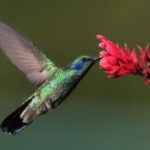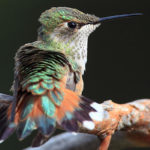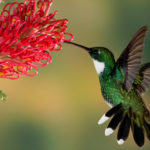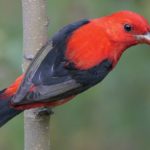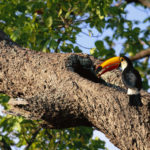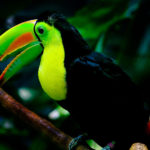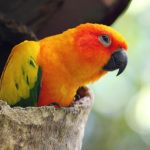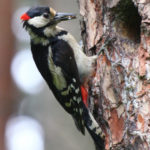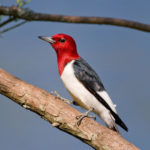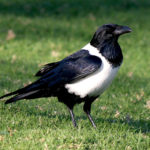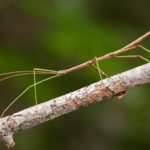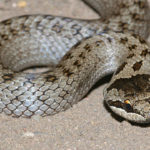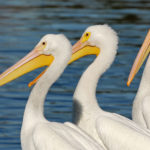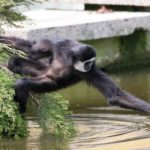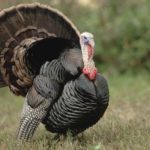Hummingbirds
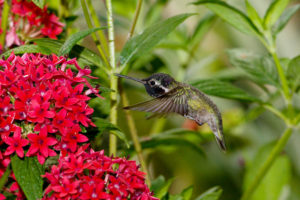 Hummingbirds are a group of very unusual birds, including 330 species. They are singled out as a separate squad of Kolybris. Systematically, swimmers are close to the hummingbird, with whom they were previously united in one unit. But these birds are so peculiar that they do not even look like their relatives.
Hummingbirds are a group of very unusual birds, including 330 species. They are singled out as a separate squad of Kolybris. Systematically, swimmers are close to the hummingbird, with whom they were previously united in one unit. But these birds are so peculiar that they do not even look like their relatives.
Hummingbirds are famous for their extremely small size: the length of most species fits a couple of centimeters, weight 2-4 g, even the largest species – a giant hummingbird – has a length of 20 cm, of which half is tail. These are the tiniest birds and one of the smallest vertebrate animals in general. The proportions of the body of the hummingbirds are reminiscent of passerine birds: medium-sized head, short neck, rather long wings. But their paws are short and very weak. It is interesting that hummingbirds can sit on branches, clasping their paws, and on the ground can not move.
But the paws of these birds are almost not needed, because they spend most of their life in flight. The manner of movement of these birds is unique. The thing is that in the hummingbird flight there is no phase of hovering or planning, when the bird moves on the outstretched wings. Instead, the hummingbirds are constantly waving their wings at a frequency of up to 100 strokes per second! Such a method of movement requires enormous energy expenditure. For comparison, suffice it to say that if a person could wave at such a speed, his body would have heated to a temperature of 400 ° C! To reduce energy costs, hummingbirds have a number of valuable devices. First, in the wings themselves, the bones coalesce with each other so that the wing forms a single plane and its supporting surface increases.
To wave such a wing in hummingbirds, the mobility of the shoulder joint is increased. Secondly, the hummingbird heart is huge and takes 40-50% of the body! The level of metabolism in these birds is very high, in order to survive, they are forced to constantly eat. Different species of hummingbirds vary greatly in the shape of the beak and tail. The beak can be pointed, short, long or subalong or curved along an arc. The tail is often short, blunt, sometimes long or forked. Plumage in these birds is shallow, feathers are weakly attached to the skin. In the hummingbird plumage, all the colors of the rainbow are present, although each species is separately colored not so variegated as parrots, for example.
Hummingbird feathers have one more interesting feature – they differently refract light, falling on them at different angles. Therefore, the coloring of the same part of the body can vary, depending on which side to look at it – the hummingbird should turn its head and the modest green color flashes with purple fire. No wonder these birds are called feathered jewels!
All kinds of hummingbirds live in the New World. These birds have reached the greatest diversity in South and Central America, in North America they are found only in its southern part. The only exception is the ruby-brown hummingbird, whose range reaches the Rockies and Canada. In connection with living in harsh conditions, this species makes seasonal flights to Mexico – during the flight the birds cover a distance of 4000-5000 km! To overcome such a huge distance hummingbirds helps speed, because these crumbs fly at a speed of up to 80 km / h. The rest of the species are sedentary. All species of hummingbirds live exclusively in the forests. The range of some species can be very limited (such species are called endemics).
